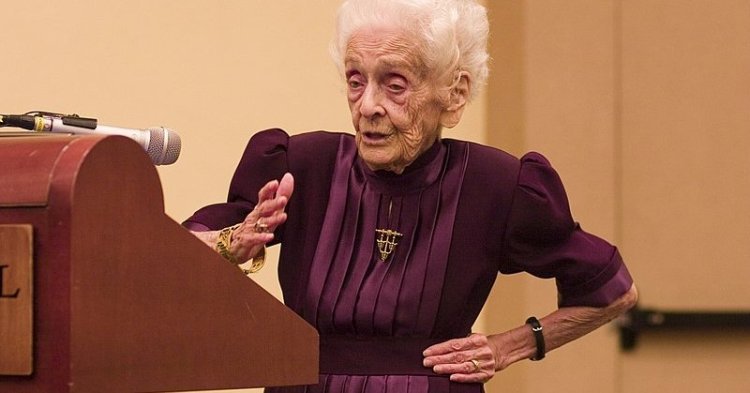
Rita Levi-Montalcini speaking at an international conference aged 98.
Photo credit: audrey_sel
History is not merely a question of fact but of how it is recorded and how we interpret it. What is remembered, and how we remember it, is shaped by our socially constructed understandings of the world as it was at the time and as we know it today.
With the feminine history of our continent often sold short under the weight of enduring patriarchal structures, women’s contributions to science, art, politics and beyond are often at best overshadowed or at worst forgotten.
The following article is part of our fortnight-long feature, “European HerStory”, during which we are presenting inspiring stories of women who have contributed to Europe. With this feature, we hope to help rectify the imbalance stemming from our collective prism of history, and inform ourselves and our readers about female achievements and innovations.
You can read the full presentation of the feature here.
Rita Levi-Montalcini (22 April 1909 – 30 December 2012) was an Italian neurologist who was awarded the Nobel Prize for Medicine for her contributions to neurology.
Montalcini was born in Turin in 1909 to Sephardic Jewish parents. She originally wanted to become a writer, but after seeing her friend afflicted with stomach cancer, she decided to become a doctor. She graduated from Turin University in 1936, despite her father’s disapproval of her continuing her education. Sadly, her academic career in Italy was cut short by antisemitic laws which banned Jews from attending university.
She moved to Belgium to continue her research, but returned to Italy after Nazi invasion, and set up a laboratory in her bedroom to study chicken embryos. During the Second World War, her family hid, and after Italy’s liberation, she worked as a medical doctor treating refugees.
After the war, Montalcini moved to the United States to research the DNA and RNA present in snake venom alongside Stanley Cohen at Washington University. As a result of their discoveries, they were awarded the Nobel Prize in Medicine in 1986. Thereafter, she continued to split her work between Italy and the United States. In 2009, Montalcini was appointed Senator for Life by the Italian government, and held the post until her death in 2012, aged 103.
About the author
Final year student studying French and Italian at the University of Birmingham, Rebecca has worked in France, and thanks to the Erasmus program on her year abroad she also worked in Belgium and studied in Italy. After her graduattion, she would like to pursue a career in translation, and spend some of my life living in Europe.





Follow the comments: |
|
